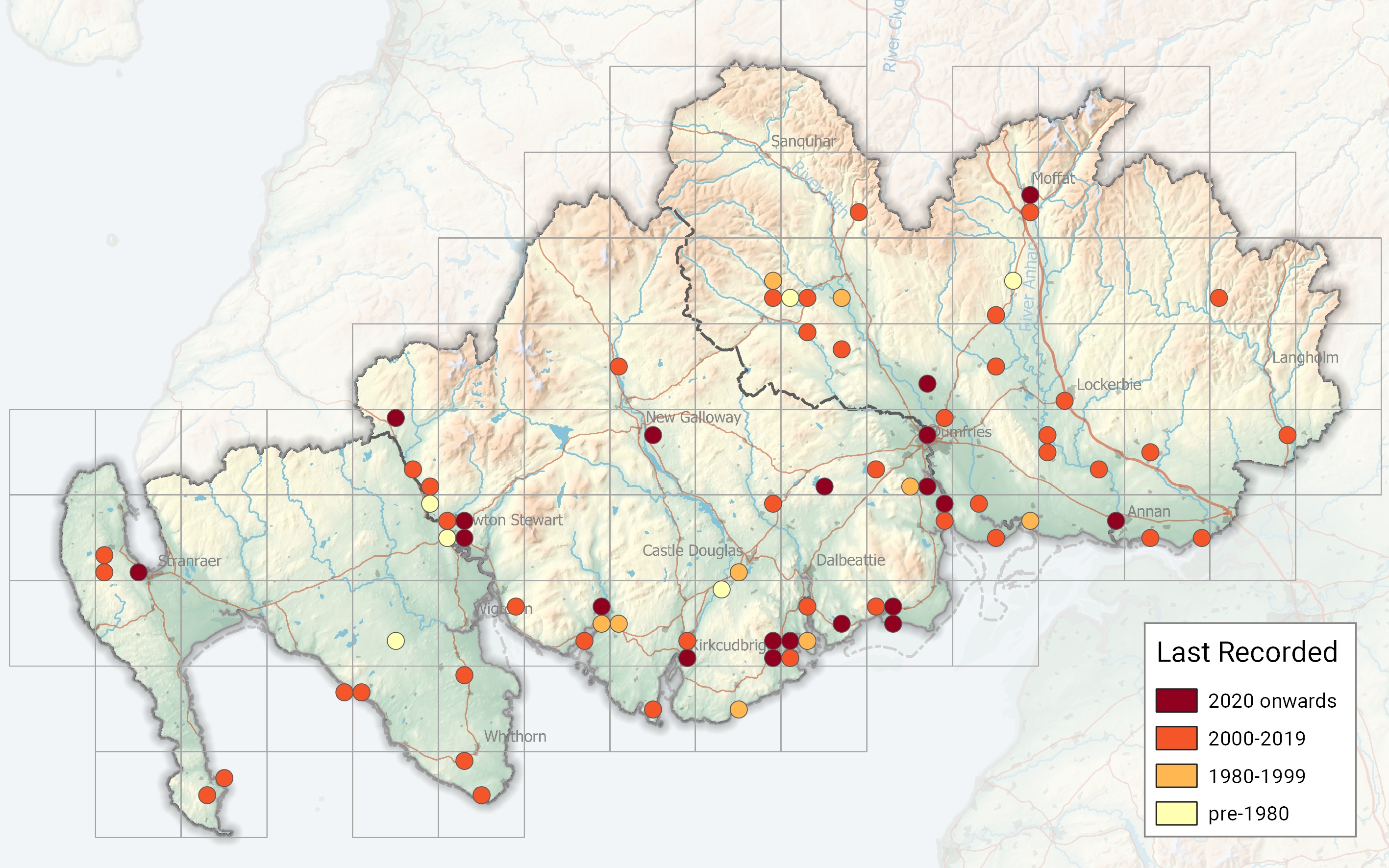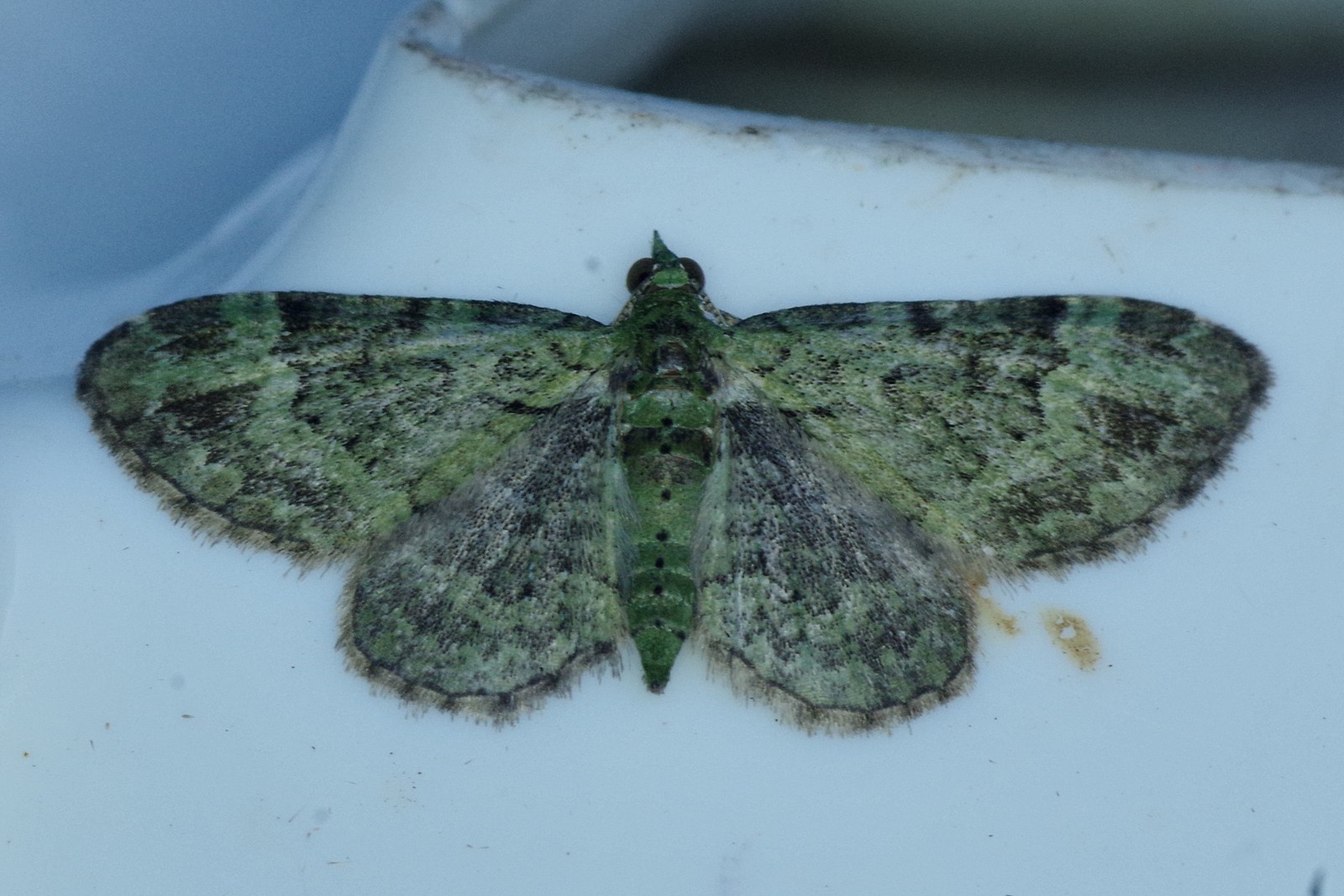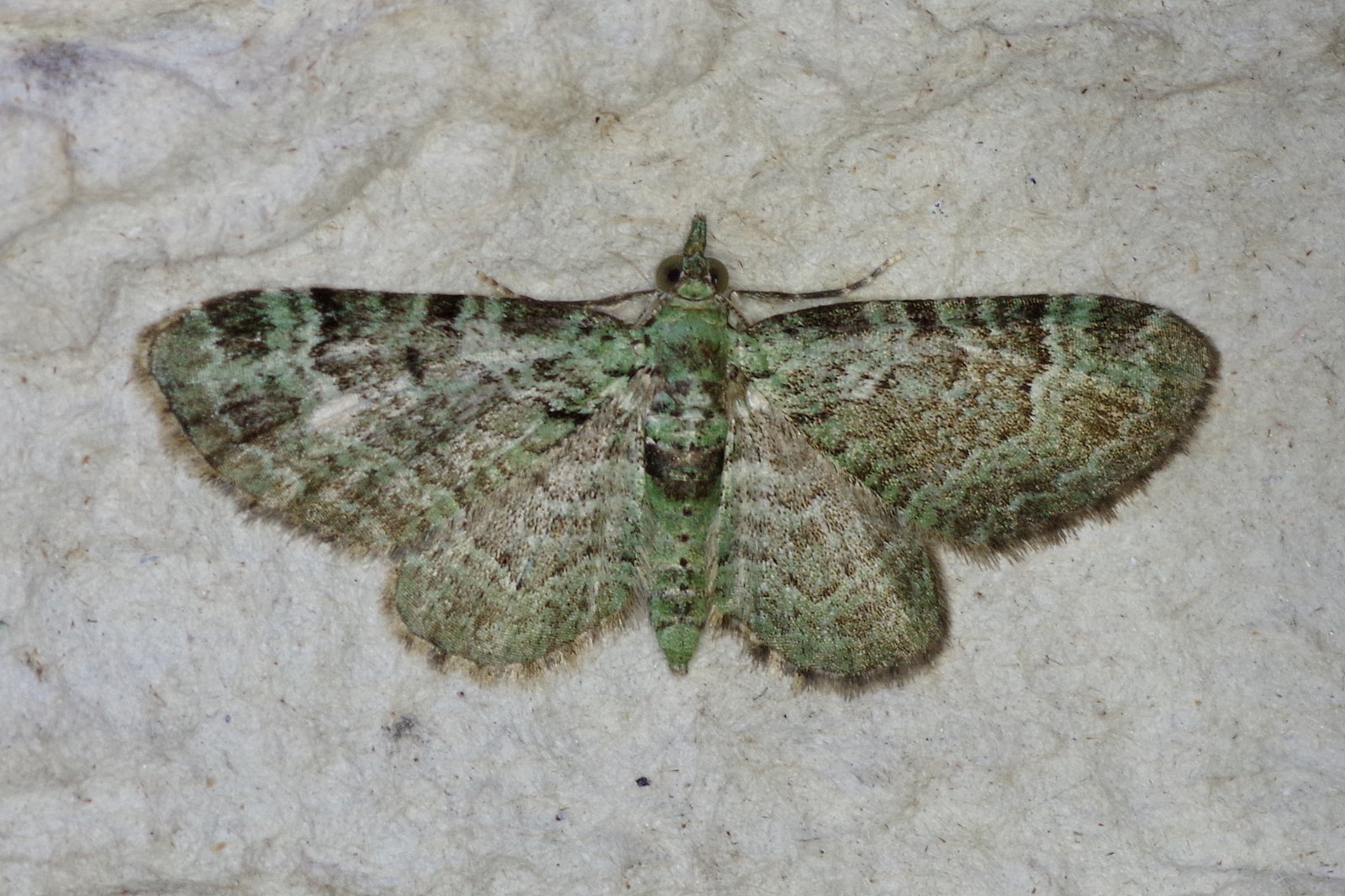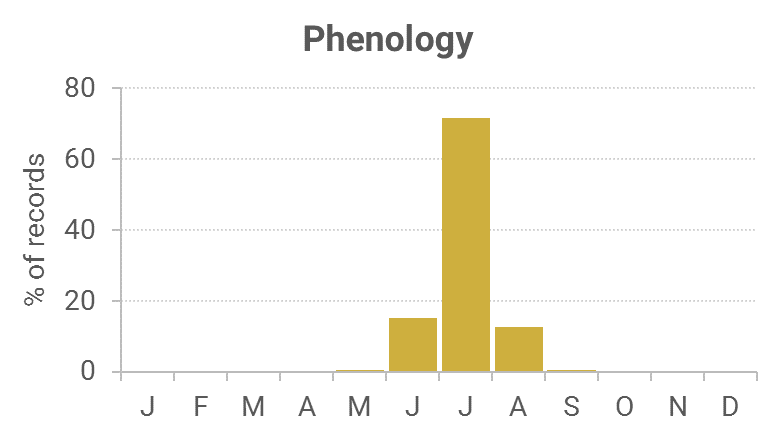Identification
Unmistakable, as the V-pug the only similar species, has a dark V on the forewing.
Recording method
Comes readily to light.
Life cycle
One generation. Overwinters as an egg. Larvae during April to May, with pupation close to the ground.
Larval foodplants
Apple, Crab Apple, Blackthorn, Cherry, Hawthorn and Pear.
Habitat
Lowland habitats like parks and gardens, scrub and woodland.
History
First recorded for Dumfries and Galloway in 1820 for VC72 at Raehills by Lennon who found it to be ‘very common around the Dumfries area’, in 1898 for VC74 near Corsemalzie by Gordon who found it ‘not uncommon on tree trunks and at rest on rocks, also in gardens at dusk in Wigtownshire’ and in 1974 for VC73 at the Gatehouse of Fleet Rothamsted light trap.
The melanic form ab. anthrax Dietze was first recorded by the Gordon brothers at Corsemalzie (VC74) during the years 1898, 1899, 1905 and 1906.









